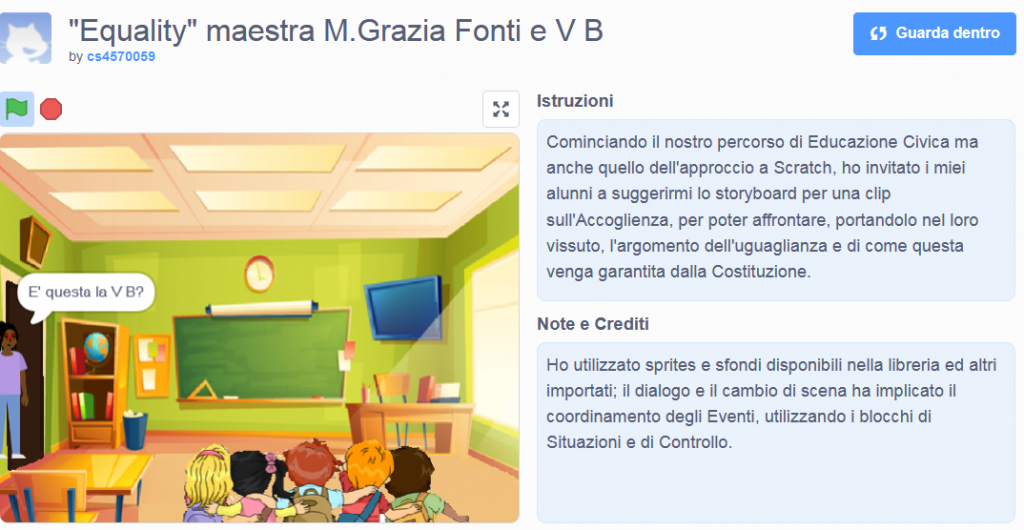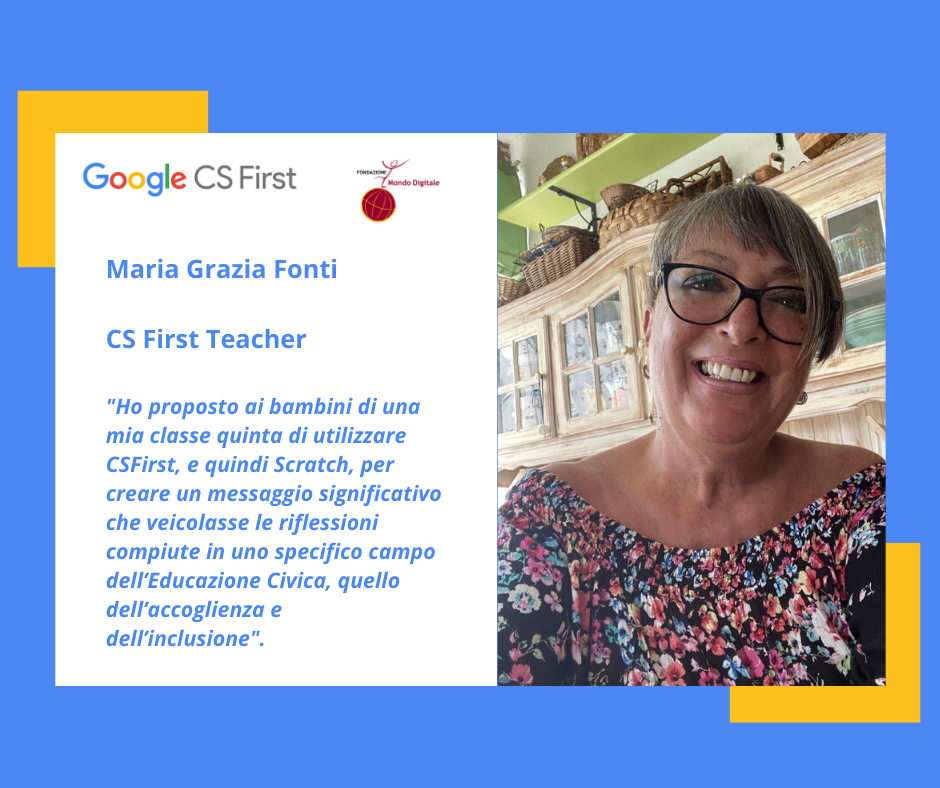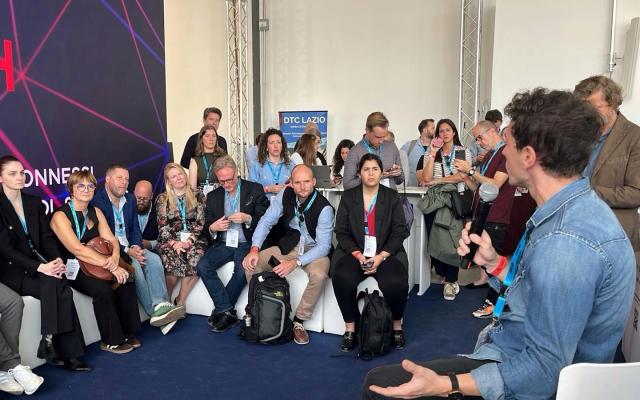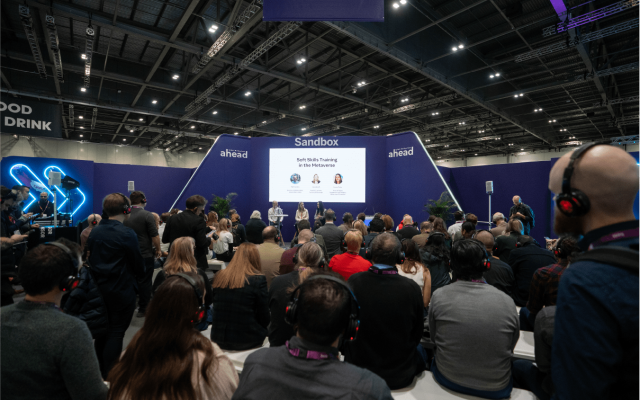Last week, as described by Prof. Elisa Baraghini, we explored the inclusive uses – especially for students with special needs – of the CS First Platform [see news: Coding for Inclusion].
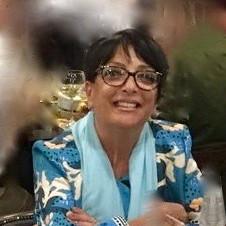 Today, Maria Grazia Fonti, English teacher at the primary school, peer trainer in the CS First Digital Room, and author of Project Equality, explains how to use the platform for experiential civic education and receiving foreign students.
Today, Maria Grazia Fonti, English teacher at the primary school, peer trainer in the CS First Digital Room, and author of Project Equality, explains how to use the platform for experiential civic education and receiving foreign students.
Maria Grazia teaches at the Istituto Comprensivo di Castel Volturno, in the Province of di Caserta, "an area of the country with a high percentage of first- and second-generation immigrants, especially from Africa.”
“In my classes, nearly one third of students are immigrants or children of immigrants, from Africa, Central and South America, China and Eastern Europe,” explains the teacher. “It’s a melting pot of cultures and lifestyles that can represent a great resource in terms of democratic co-existence, cultural enrichment, and a source of active global citizenship. However, barriers and prejudice can produce negative feelings that push people to refuse and not accept this.”
How does one develop a coding project dedicated to reception? “We started by observing our personal behaviour towards newcomers, to understand out attitudes towards hypothetical new students (brain storming, circle time, word clouds).” Here is what Maria Grazia writes ...
We then role-played. Each student was asked to pretend to be arriving from another country to attend the school (“imagine how you would feel on your first day of school if your family moved abroad. You hardly speak the language, if at all. What type of behaviour by your new classmates would put you most at ease? And what about the teacher? What behaviour towards you would make you suffer the?”). The hottest issues are written up on the blackboard. Then, we worked on a word cloud to identify critical issues. At this point, we had sufficient material to define our message: the aim is to invite everyone to be welcoming to newcomers through small things that allow the new classmate to understand that he is welcome, and the group is open.
So, how do we produce an efficient message? And with which tools? A written note, even as a billboard, could be ignored. A short video message may be more attractive. What tools should we use? Our choice was to turn to Computer Science First and Scratch. A real video might cause issues to circulate due to privacy regulations, and not everyone is a naturally born actor! CS First and Scratch, on the other hand, allow us to act through avatars!
So, we set to work on a storyboard. How should we introduce the discussion? How does our short story pan out? We decide to work in spontaneously formed groups and limit the story to the arrival of two new students, who will be kindly welcomed and asked to choose where to sit. These were two welcoming actions identified in the prior discussion: welcoming and inviting. The short story ends with a short text summarising the students’ observations: to feel and be equal it is necessary to “welcome” any novelty and keep in mind that we all have the same rights and duties, but different personalities and histories. And it is that diversity that makes humanity interesting and varied.
Tasks were also shared on the coding project, but everyone worked on the same computer and multimedia board. It was a perfect opportunity to test many of the elements of the CS First Platform: choosing backgrounds sprites (at this age, the children have very precise ideas about what images to use!), so they must be found on-line, imported, cut out and resized; developing code for each sprite using code blocks (move, wait, control and situation) and coordinating the action of sprites (show/hide) and the messages that start and stop action; choosing the right music (this also had to be imported).
The work was short, but required a lot of commitment, as the students were not well acquainted with the platform. My help in debugging, for example, or encouraging them to improve the project was fundamental. However, I also understood that it is necessary to allow them to make errors and experiment.
I sure hope that coding will soon be introduced definitively in didactic activities. It must be a permanent course to fully enjoy its organic and incisive benefits.
We also asked Maria Grazia about the role of the CS First Platform for teaching foreign languages: “I was lucky that English is everywhere in coding activities. Even just asking children to use this language in a game or for coding a story provides me with the opportunity to improve their understanding of English. However, the true trump card is the language function in Scratch that allows the programme to write, read and translate (extensions of version 3). This means that even students who don’t speak Italian well can participate and the activity helps them in Learning Italian as L2, as well as improve the English of the Italian children. Moreover, the coding blocks can be viewed in over 40 languages, another element that helps to readily overcome any barrier that might slow down group participation in the activity. Therefore, one of the activities I consider most productive is storytelling. By using CS First and Scratch, two or more students who speak different languages can interact in real-time and freely express themselves.
The structure of CS First is complementary to that of Scratch. It provides us with the opportunity of forming a class group, without violating any privacy regulations – as students are registered with a nickname – to monitor their progress, use a wide range of well-structured activities from which I can select those most suited to the group or individual student.”
What are your projects for the future? In which other ways can we use this platform? Here is the teacher’s answer: “As soon as I will be able to plan activities for an entire year, I will employ the CS First Platform with greater continuity, especially to address interdisciplinary topics with colleagues and allow students to enjoy a more organic and functional use of coding tools.
